Total Eclipse of the South Pole
- DEAN NELSON (he/him) CTC, LLD

- Jun 22, 2021
- 6 min read
Updated: Oct 18, 2022
Join our friends at Oceanwide Expeditions for a rare and riveting cosmic event seen from the Antarctic Peninsula. This incredible 19-night expedition takes you from Ushuaia over the Drake Passage to the South Shetland Islands to Heko Harbour, Brown Bluff on the Weddell Sea to the South Orkney Islands then onto South Georgia and the Falkland Islands.

Itinerary aboard the m/v Hondius
PLEASE NOTE: All itineraries are for guidance only. Programs may vary depending on local ice and weather conditions and in order to take advantage of opportunities to see wildlife. The on-board expedition leader determines the final itinerary. Itineraries may mention places that require permission to land, which must be granted by the relevant national authorities. Such permission is not granted prior to the publishing of these itineraries. Flexibility is paramount for expedition cruises. Average cruising speed of m/v Hondius is 10,5 knots.
Though you can see the total solar eclipse along a few key path locations around the globe, none of them offers as unique a “venue” as Antarctica. Combine that with everything else you’ll enjoy during this voyage and you end up with one truly exceptional adventure. Reserve your place on one of our ships soon and experience that adventure for yourself!

Day 1: End of the world, start of a journey
Your voyage begins where the world drops off. Ushuaia, Argentina, reputed to be the southernmost city on the planet, is located on the far southern tip of South America. Starting in the afternoon, you embark from this small resort town on Tierra del Fuego, nicknamed “The End of the World,” and sail the mountain-fringed Beagle Channel for the remainder of the evening.
Day 2 – 3: Path of the polar explorers
Over the next two days on the Drake Passage, you enjoy some of the same experiences encountered by the great polar explorers who first charted these regions: cool salt breezes, rolling seas, maybe even a fin whale spouting up sea spray. After passing the Antarctic Convergence – Antarctica’s natural boundary, formed when north-flowing cold waters collide with warmer sub-Antarctic seas – you are in the circum-Antarctic upwelling zone. Not only does the marine life change, the avian life changes too. Wandering albatrosses, grey-headed albatrosses, black-browed albatrosses, light-mantled sooty albatrosses, cape pigeons, southern fulmars, Wilson’s storm petrels, blue petrels, and Antarctic petrels are a few of the birds you might see.
Day 4 – 6: Day 4 – 6
This extended voyage gives you the chance to sail even farther down the icy coast of the western Antarctic Peninsula. In the Gerlache Strait are several opportunities for great landings where you might set foot on the Antarctic Continent, surrounded by an epic landscape of alpine peaks and mammoth glaciers calving at sea level. Gentoo penguins, leopard seals, Weddell seals, humpback whales, and minke whales are often seen here. The volcanic islands of the South Shetlands are windswept and often cloaked in mist, but they nonetheless offer many subtle pleasures. A wide variety of flora (mosses, lichens, flowering grasses) and fauna (gentoo penguins, chinstrap penguins, southern giant petrels) live here. On Deception Island, the ship plunges through Neptune’s Bellows and into the flooded caldera. Here you can find hot springs, an abandoned whaling station, and thousands of cape petrels. A number of kelp gulls, brown skuas, south polar skuas, and Antarctic terns can be spotted here too. If ice permits, you sail into the Weddell Sea. Here colossal tabular icebergs herald your arrival to the eastern side of the Antarctic Peninsula. You might visit Brown Bluff, located in the ice-clogged Antarctic Sound, where you could get the chance to set foot on the continent. Paulet Island, with its large population of Adélie penguins, is another possible stop.
Day 7 – 8: East to the eclipse
Giant icebergs and a good chance of fin whale sightings enliven this segment of the voyage. Also, your best chance to spot Antarctic petrels is here. Depending on ice and weather conditions, the aim is to venture into the pack ice to find the best possible position for viewing the solar eclipse.
Day 9: Weddell Sea pack ice & total solar eclipse (Dec 4, early morning)
The ship positions itself in the center of the shadow of the moon, and if possible, some distance into the Scotia Sea drift ice. The ice edge will be about 60°S, 41°W. Some coordinates for the path of the moon’s shadow: 7.06 UTC: 58º 47.7' S – 42º 45.2' W, 1' 39" , 8 degrees above horizon 7.08 UTC: 60º 42.4' S – 40º 59.8' W, 1' 42" , 9 degrees above horizon 7.10 UTC: 62º 22.3' S – 39º 48.0' W, 1' 44", 11 degrees above horizon
Day 10: Northward bound
There may be sea ice on this route, and at the edge of the ice some south polar skuas and snow petrels could join the other seabirds trailing the vessel north.
Day 11 – 14: South Georgia journey
Today you arrive at the first South Georgia activity site. Please keep in mind that weather conditions in this area can be challenging, largely dictating the program. Over the next several days, you may visit the following sites: Cooper Bay – A Zodiac cruise in Cooper Bay offers a great opportunity to see macaroni penguins below a large rookery. Numerous fur and elephant seals are found on the beach, while majestic light-mantled albatrosses can be seen gracefully gliding above. Grytviken – In this abandoned whaling station, king penguins walk the streets and elephant seals lie around like they own the place – because they basically do. Here you might be able to see the South Georgia Museum as well as Shackleton’s grave. Fortuna Bay – A beautiful outwash plain from Fortuna Glacier is home to a large number of king penguins and seals. You may have the chance to follow the final leg of Shackleton’s route to the abandoned whaling village of Stromness. This path cuts across the mountain pass beyond Shackleton’s Waterfall, and as the terrain is partly swampy, be prepared to cross a few small streams. Salisbury Plain, St. Andrews Bay, Gold Harbour – These sites not only house the three largest king penguin colonies in South Georgia, they’re also three of the world’s largest breeding beaches for southern elephant seals. Only during this time of year do they peak in their breeding cycle. Watch the four-ton bulls keep a constant vigil (and occasionally fight) over territories where dozens of females have just given birth or are about to deliver. You can also see a substantial number of Antarctic fur seals here during the breeding season (December – January).
Day 15 – 16: Once more to the sea
On the way to South Georgia, you cross the Antarctic Convergence. The temperature gradually cools, and nutritious water rises to the surface of the sea due to colliding water columns. This phenomenon sometimes attracts a multitude of seabirds near the ship, including several species of albatross, shearwaters, petrels, prions, and skuas.
Day 17: Porting in Port Stanley
The capital of the Falklands and center of its culture, Port Stanley offers a little Victorian-era charm: colorful houses, well-tended gardens, and English-style pubs are all to be found here. You can also see several century-old clipper ships nearby, silent witnesses to the hardships of 19th century sailors. The small but interesting museum is also worth a visit, covering the early days of settlement up to the Falklands War. Approximately 2,100 people live in Port Stanley. Admission to the museum is included.
Day 18: Finding the Falklands
The Falkland Islands offer an abundance of wildlife that is easily approachable, though caution is always advised. These islands are largely unknown gems, the site of a 1982 war between the UK and Argentina. Not only do various species of bird live here, but chances are great you’ll see both Peale’s dolphins and Commerson’s dolphins in the surrounding waters.
Day 19: The winged life of the westerlies
Several species of albatross follow the vessel into the westerlies, along with storm petrels, shearwaters, and diving petrels.
Day 20: There and back again
Every adventure, no matter how grand, must eventually come to an end. It’s now time to disembark in Ushuaia, but with memories that will accompany you wherever your next adventure lies.
Included in this voyage
Voyage aboard the indicated vessel as indicated in the itinerary
All meals throughout the voyage aboard the ship including snacks, coffee and tea.
All shore excursions and activities throughout the voyage by Zodiac.
Program of lectures by noted naturalists and leadership by experienced expedition staff.
Free use of rubber boots and snowshoes.
Luggage transfer from pick-up point to the vessel on the day of embarkation, in Ushuaia.
Pre-scheduled group transfer from the vessel to the airport in Ushuaia (directly after disembarkation).
All miscellaneous service taxes and port charges throughout the programme.
Comprehensive pre-departure material.
Excluded from this voyage
Any airfare, whether on scheduled or charter flights
Pre- and post- land arrangements.
Passport and visa expenses.
Government arrival and departure taxes.
Meals ashore.
Baggage, cancellation and personal insurance (which is mandatory).
Excess baggage charges and all items of a personal nature such as laundry, bar, beverage charges and telecommunication charges.
The customary gratuity at the end of the voyages for stewards and other service personnel aboard (guidelines will be provided).
Limited space available. Reserve your space today. Click here to request more information on this and other incredible expedition itineraries.
Book your Polar Expedition today. Click here to set up a consultation or to book today.

departuresXdean - an independent agent with Personal Travel Mgmt. (BC Reg. 2806) proud members of the IGLTA and the Ensemble Travel Group.
Where do you want to go? Click here to contact me.

.png)



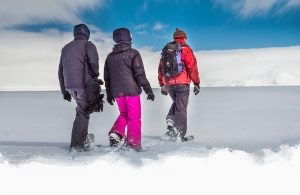
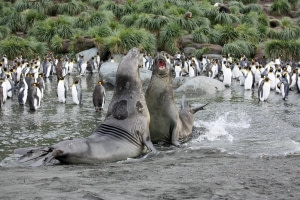
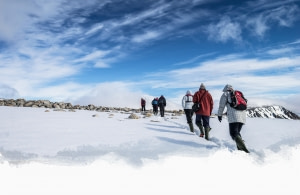
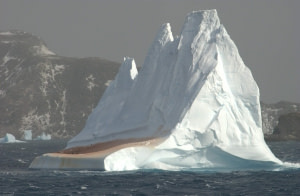
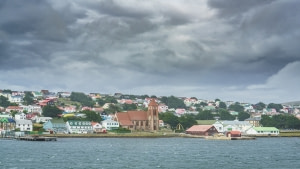
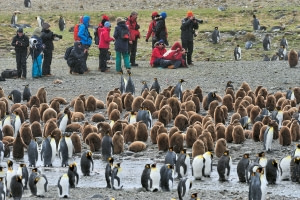
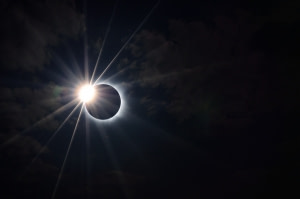
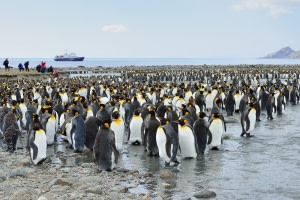
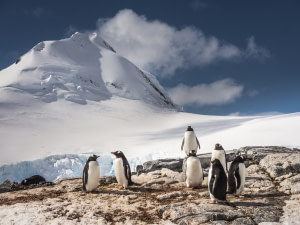
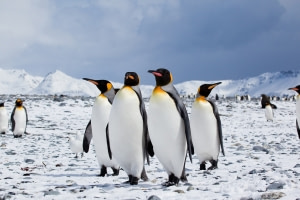
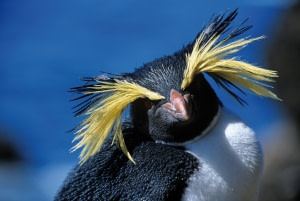











Comments